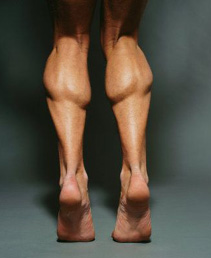Brian Schiff’s Blog
Injury Prevention, Sports Rehab & Performance Training Expert
Unearthing the cause of anterior knee pain and ridding our patients and clients of it is one of the never ending searches for the “Holy Grail” we participate in throughout training and rehab circles. I honestly believe we will never find one right answer or simple solution. However, I do think we continue to gain a better understanding of just how linked and complex the body really is when it comes to the manifestation of knee pain and movement compensations.
We used to say rehab and train the knee if the knee hurts. It was simply strengthen the VMO and stretch the hamstrings, calves and IT Band. Slowly, we began looking to the hip as well as the foot and ankle as culprits in the onset of anterior knee pain. The idea of the ankle and hip joint needing more mobility to give the knee its desired level of stability has risen up and seems to have good traction these days.
Likewise, therapists and trainers have known for some time that weak hip abductors play into increased femoral internal rotation and adduction thereby exposing the knee to harmful valgus loading. So, clam shells, band exercises and leg raises have been implemented to programs across the board.

Single Leg Resisted Hip External Rotation
As a former athlete who has tried his hand at running over the past 5 years, I have increasingly studied, practiced and analyzed the use and importance of single leg training and its impact on my performance and injuries. As I dive deeper into this paradigm, I continue to believe and see the benefits of this training methodology for all of my athletes (not just runners).
As a therapist and strength coach, it is my job to assess movement, define asymmetries and correct faulty neuromuscular movement patterns. To that end, I have developed my own assessments, taken the FMS course, and increasingly observed single leg strength, mobility, stability and power in the clients I serve. Invariably, I always find imbalances – some small and some large ones.
What are some of the most common issues I see?
Many people like to do lunges in the gym. Many people do them wrong. Some simply do not know proper form, while others have mechanical issues preventing them from executing proper form.
Unfortunately, many clients struggle to keep the knee in line with the foot, and the knee often caves inward. Even with verbal, visual and tactile cues, they may still struggle to master the proper form due to flexibility and strength imbalances. This may have to do with limited ankle mobility, but for the purposes of this post, I want to address the hip. More specifically, people often lack mobility, stability and strength in the hips.
I recently wrote two columns for PFP Magazine featuring two exercises I use to clean up lunge form:
- Torso Rotational Lunges
- Diagonal Hip Flexor Lunge Step
The torso rotational lunge is great for integrated muscle activation of the gluteus medius, while I utilize the diagonal hip flexor lunge step to address hip flexor tightness and limited thoracic spine mobility.

Torso Rotational Lunge

Diagonal Hip Flexor Lunge Step
In these columns, I specifically review regressions and progressions. So, whether you train clients or simply want to take your lunges to the next level, check out the full columns online at PFP below:
Click here for the Torso Rotational Lunges
Click here for the Diagonal Hip Flexor Lunge Step
Looking for more cutting edge training tips and rehab/injury prevention strategies? Subscribe to my members’ only Training & Sports Medicine Update available at www.BrianSchiff.com.

Some people love their calves, while others hate them. Ever see people piling on the weight at the gym (barbells, seated calf press machine, etc.) attempting to build shapely calves? Or maybe you see people performing calf raises on a box with their feet in, straight ahead and out. The question has long been this: is there any real benefit to doing them beyond the neutral or straightforward position to get maximal activation and strength gains?
Why is this important? Well, beyond muscle tone, this question has physiological ramifications with respect to performance and rehabilitation. Consider, for example that as knee flexion angles increase, the medial gastroc becomes increasingly disadvantaged regardless of the ankle position. This suggests inherent functional differences in the muscle architecture and activation patterns of the medial and lateral heads of the gastroc.
In a study just published in the March 2011 Journal of Strength & Conditioning Research, Riemann et al. investigated the impact of all three positions on gastroc activation. They used 20 healthy subjects (10 male and 10 female) with no history of a calf injury and all had prior resistance training experience.
In most gyms and training circles, people are performing bench press or push-up exercises. There is no doubt in my mind that repetitive heavy full range bench press causes many of the labral and cuff injuries among males I have seen over the years These injuries are often the attritional type – developing over many months and years.
What about push-ups? Is the force development pattern the same? Are they safer? Honestly, I believe in keeping the elbow at a point at which it does not drop below the plane of the body (bench press) or move above the body (push-up). Essentially that means keeping to a 90 degree angle or less. Why? Well, regardless of load, I feel the real risk is not so much in the motion itself but the very repetitive manner in which it occurs with external loads, often lending itself to acquired anterior shoulder laxity, strain on the proximal biceps anchor (think SLAP lesions) and secondary shoulder impingement. The picture below hurts my shoulders just looking at it, and over time this technique will hurt your shoulders too.

But, I say all that to set up today’s post. In a recent article in the February edition of the Journal of Strength & Conditioning Research, David Suprak et al. looked at the effect of position on the % of body mass supported during traditional and modified push-ups.
The study looked at 4 static positions in 28 males (about 34 years old) who were highly trained and members of the special forces or SWAT team (the up and down position for regular and modified push-ups) to determine the change in body mass (BM) supported by the upper body in different ranges of motion. The down positions studied were at approximately 90 degrees (the lowest depth I safely recommend) and all holds were performed for 6 seconds.


I think most people involved in health and fitness are up to speed on the move to address mobility and stability at the hip as an integral part of our assessments and exercise prescription. I know in my practice I see lots of issues with both a lack of hip stability and mobility.
As I learn, practice and evolve as a professional, I find myself looking for more bang for my buck with exercises. A few themes and trends in my own training include:
- Increasing emphasis on body weight exercises
- More and more single leg training
- Integrated movement patterns versus isolation
So, if you are familiar with Gray Cook and Mike Boyle (I am specifically referring to their writing and discussion on the joint by joint approach) you know that they advocate for increasing mobility at some joints and gaining stability at others. Ironically, the hip has a need for more of both depending on the movement and individual imbalances.
So, I really enjoy exercises that provide some of each and meet the trends I referenced above. I just released one such hip exercise in my “Functionally Fit” Column in PFP Magazine. I call it the RDL Hip Driver.


Click here to read the entire post with a full description of how to perform the exercise and its functional application.

